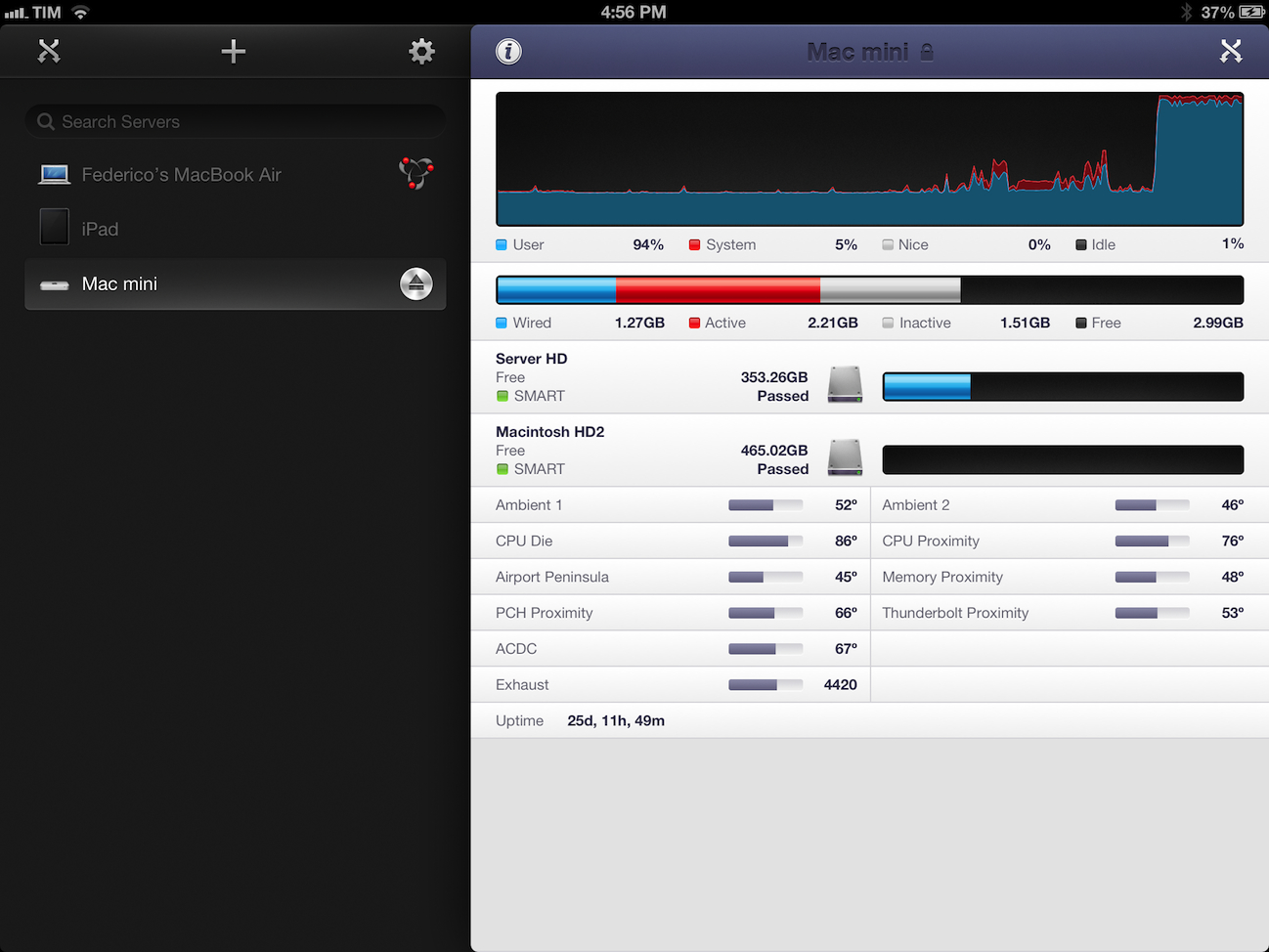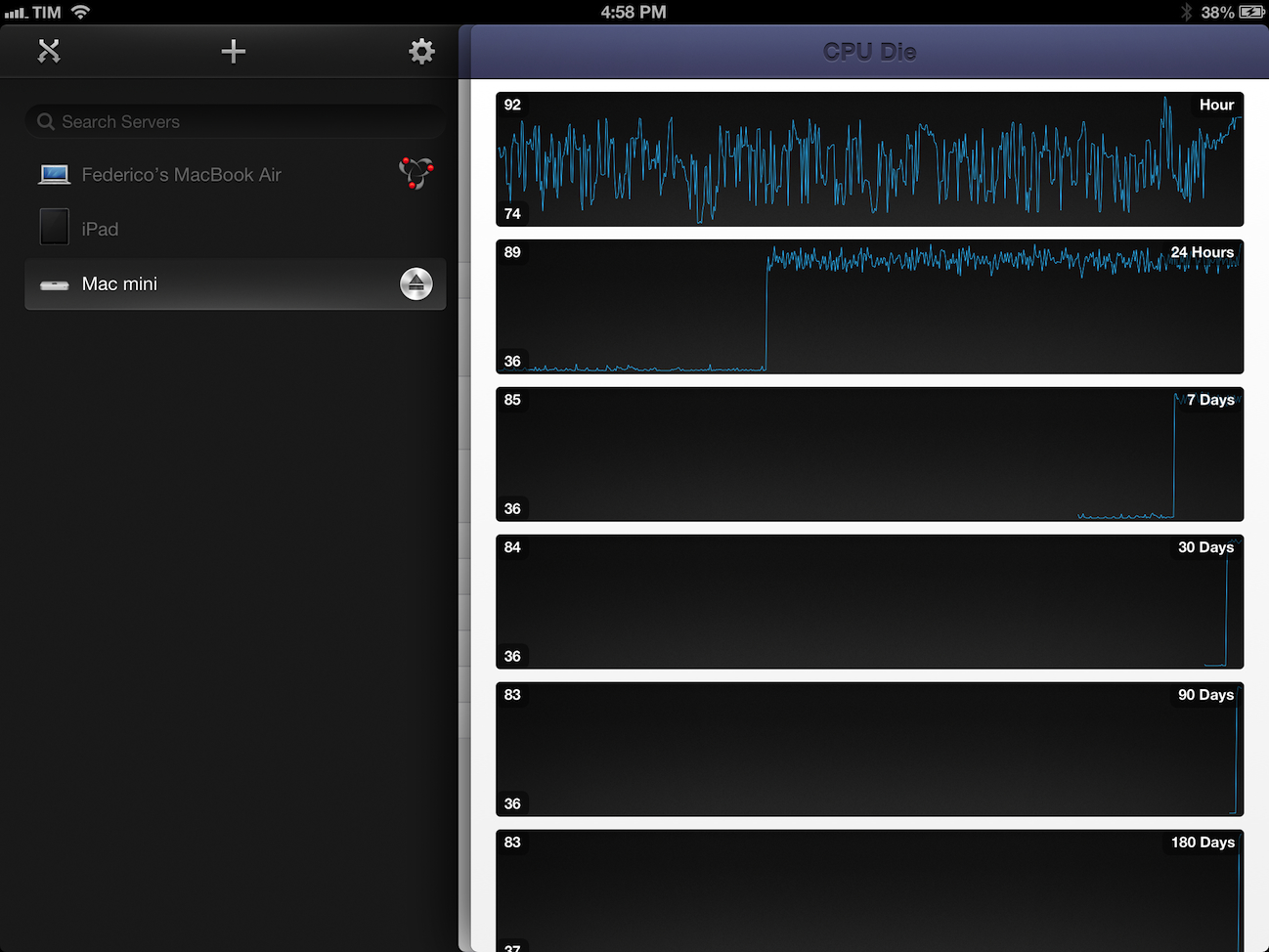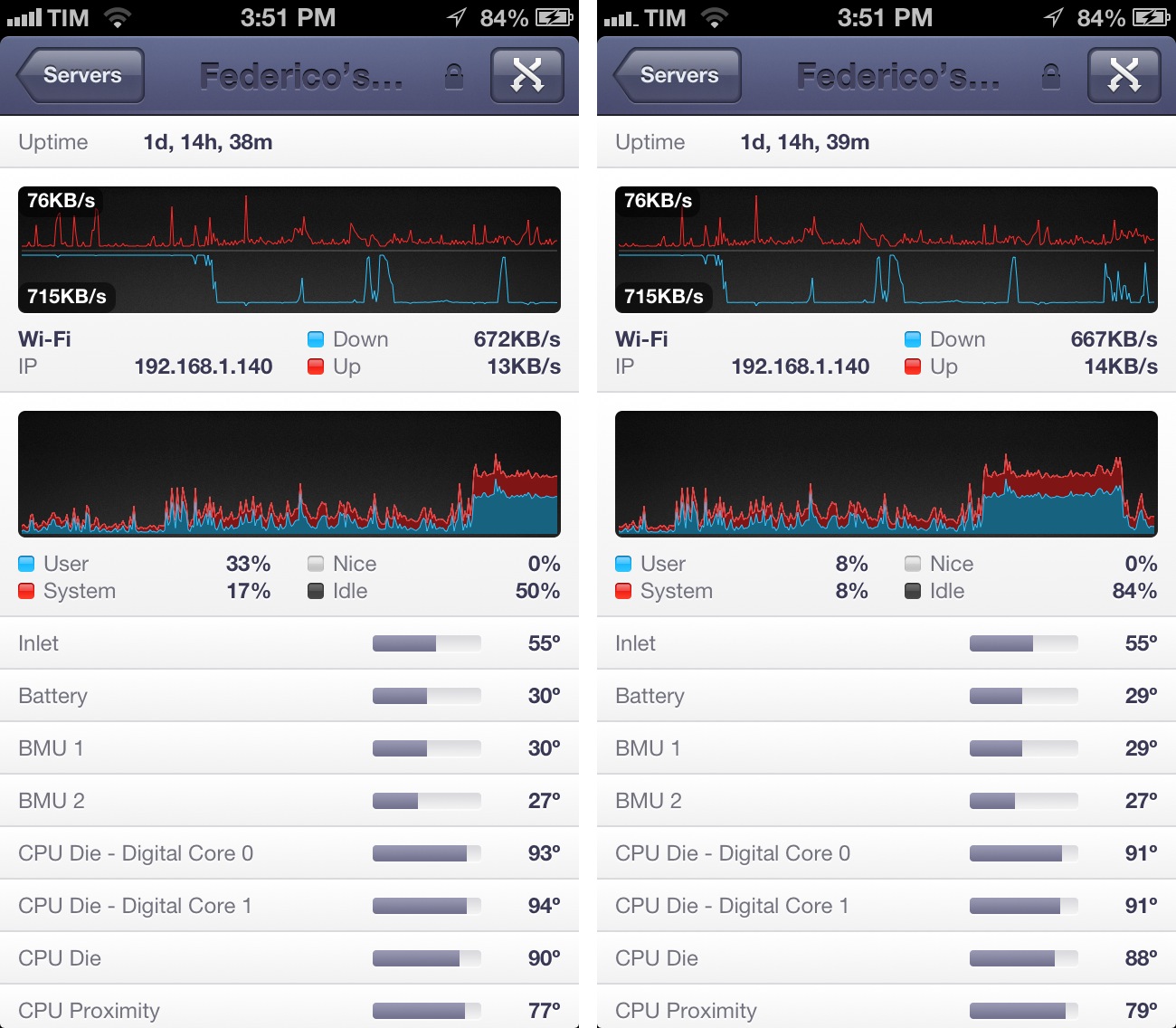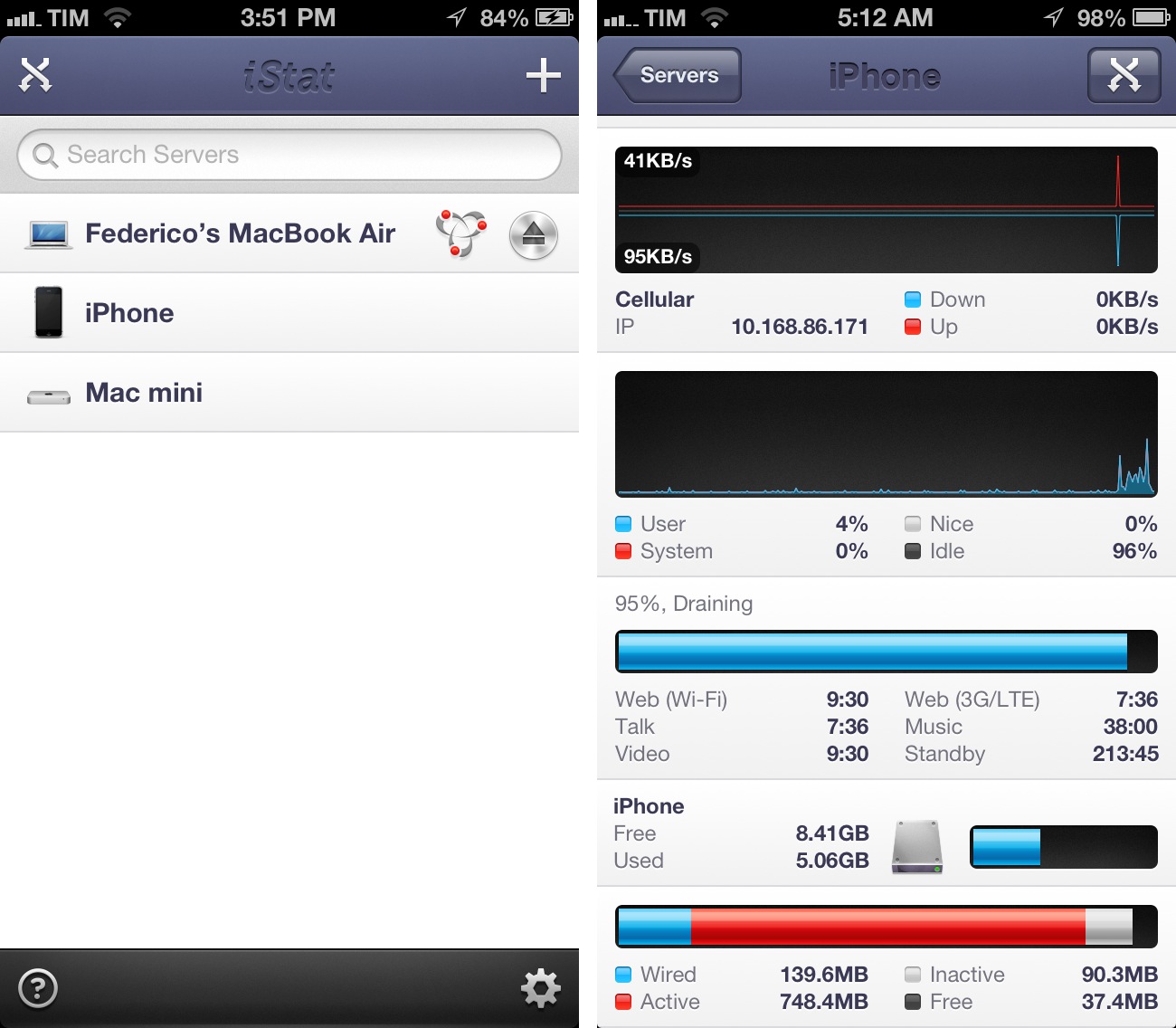I like Bjango. They make the kind of simple, polished, and useful software that defines OS X as a platform with equal attention to beautiful pixels and powerful features. I was already a big fan of Consume and Skala. Bjango’s latest release, iStat 2, falls exactly under this category of apps: great-looking and efficient at the same time.
Mac Servers
I own a 13-inch MacBook Air and a 21.5-inch iMac. My MBA is the “work machine”, whereas the iMac has always been the media center of the house, as it’s connected to a couple of external drives with my iTunes library on it. For the past few months, however, I’ve been increasingly switching every part of my “entertainment workflow” from local to cloud-based. It started with Rdio a year ago (now, I have a Family account and I’m not switching any time soon). For iTunes, it means I’ve slowly uploaded my library to a Mac mini hosted on Macminicolo. As documented elsewhere, I’m very happy with Macminicolo, their reliability, and the overall message of a Mac mini server always available in the cloud.
But I’m not a “server guy”. I don’t understand the teminology behind server management, and my limited skills go as far as restarting WebDAV and Apache. I use my Mac mini primarily for media streaming through Plex and as a server for Mail, OmniFocus, Dropbox, and other services or apps that allow me to automate my workflow in the cloud. All my Dropbox-based scripts for plain text and OmniFocus are created with the Mac mini in mind, because it’s always-on and lets me receive results in real time. Hazel is another invaluable utility when it comes to automating a remote Mac.
I do put my Mac mini through some more processor-intensive tasks every once in a while. Usually, it’s movie conversion through Handbrake or movie streaming through Plex Media Server. I recoginize this doesn’t compare to using a mini as an Xcode build server, but it’s still something that I want to keep an eye on.
iStat
I’ve been using iStat Menus on my Mac for what seems like forever. In fact, I recommended the app both in 2010, 2011, and I’m still using it today. It lives in my menubar, and it gives me detailed information about my Mac as well as other data such as time in other locations. It has, however, a downside: iStat Menus can’t be accessed from other devices – and that’s why Bjango developed a server version, aptly named iStat Server, aimed at making your Mac available from iOS devices running iStat.
iStat 2 is Universal for iPhone and iPad, and it lets you monitor Macs with iStat Server installed, as well as some system information for your iOS device. On the iPad, the app makes use of the larger screen to display available devices in a sidebar, presenting larger graphs that are easier to view.
iStat offers a lot of detailed system stats that, for someone like me, are still easy to understand and go through. Using iStat Server and Bonjour for secure connections, iStat gives me the following stats for my Macs:
- CPU
- Uptime
- Network
- Load Average
- Memory
- Memory Additional
- Disks
- Temperatures
- Fans
For iOS devices, the list doesn’t obviously include Temperature and Fans.[1]
The main screen of iStat 2 lists all your available devices. You can search across them, or you can add a new one by hitting the + button and entering a Name, Address, and Port. If your router supports UPnP, mapping should be done automatically by the iStat Server app running on your computer. Once added, the first connection to a computer (whether local or not) will ask you for a confirmation PIN displayed by iStat Server on the desktop; add it, and you’ll be set all future sessions. iStat’s setup process is extremely simple and user-friendly.
You can access a server by tapping on it. Servers with an open connection have a little Eject button next to their device icon, which is custom for every Mac and iOS device.
The server screen is where the good stuff happens. There are graphs for a variety of information such as CPU load and Network traffic. They are animated and they update in real time – this is useful to check upon a Mac when, such as in my case, the machine is processing heavy video files or streaming over the Internet. Even better, you can tap on the items displayed by iStat to get a History view that display stats over time for the past Hour, 24 Hour, 7 Days, 30 Days, 3 months, 6 months, and year. I like how on the iPad History is displayed through a sliding panel, rather than in a deeper view like on the iPhone.
iStats provides detailed statistics for iOS devices as well. You won’t be able to access History view on iOS, but I found the breakdown of battery time left depending on usage (3G, Talk, Video, etc) very handy. Similarly, the “Available Space” graph visualize a useful piece of information that would otherwise be buried in the Settings. I don’t care about RAM and CPU monitoring on my iPhone, but I’m glad Bjango added a Network option.
I like iStat for two reasons. Firstly, it allows me to keep on eye on my Mac mini to see everything’s running smoothly. I plan on using the mini a lot more for advanced tasks in the future, and iStat Server is the tool I’ll be keeping around.
Second, iStat 2 is beautiful server monitoring for mortals. I don’t need super-nerdy monitoring software with complex terminology: I just want a simple app that checks on essential components of my Mac, remotely, in the background, reliably. iStat 2 fills this need beautifully[2], and it’s only $4.99 on the App Store.





